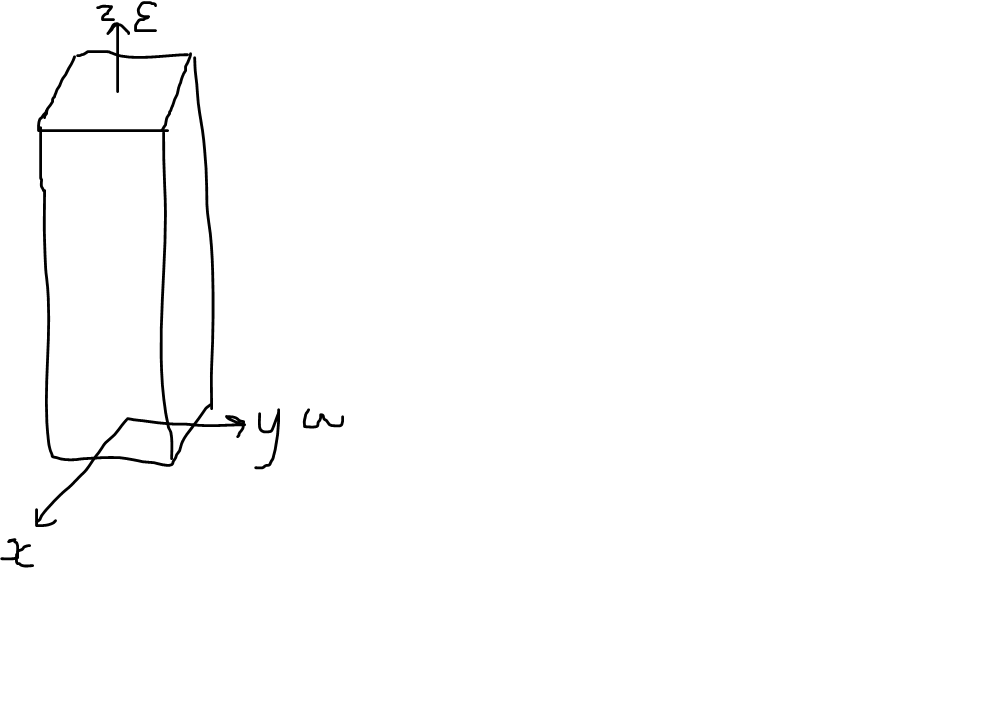2-Optics and Mineralogy
1/35
There's no tags or description
Looks like no tags are added yet.
Name | Mastery | Learn | Test | Matching | Spaced |
|---|
No study sessions yet.
36 Terms
Explain the concept of polarised light.
Light is transverse - vibration is perpendicular to the direction of energy transfer
Polariser filters through only light in one direction, filters out light in other planes.
State the polarisation directions of the polarizer and the analyser on a petrological microscope
E-W in polariser
N-S in analyser
Give the definition of the refractive index
How when light changes medium it changes speed
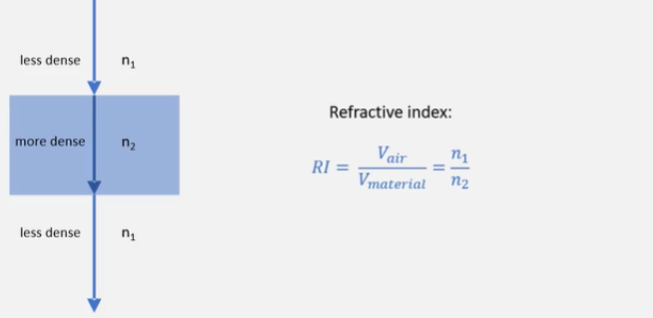
What is snell’s law?
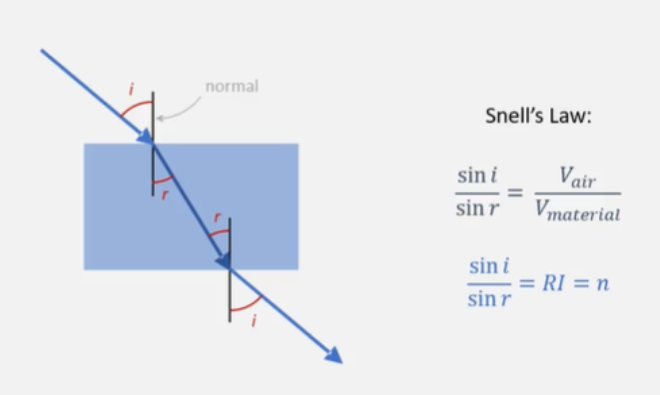
Use petrological observation to classify minerals as having low, medium, or high relief
Relief describes the refractive index contrast between the mineral and the mounting medium (glue)
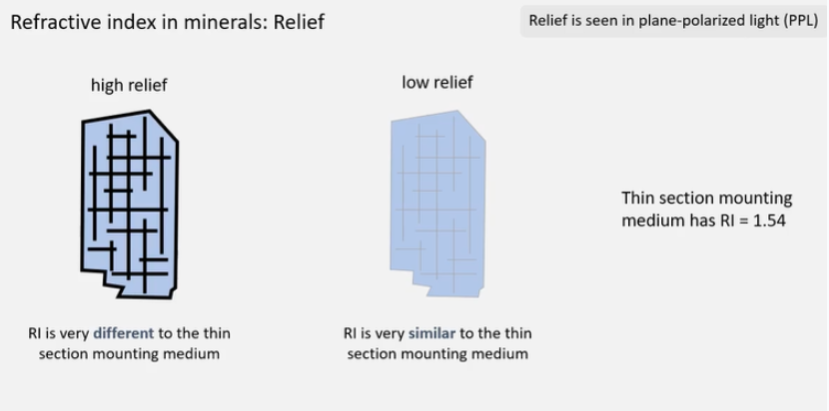
Explain the concept of the optical indicatrix. Difference between isotropic and anisotropic
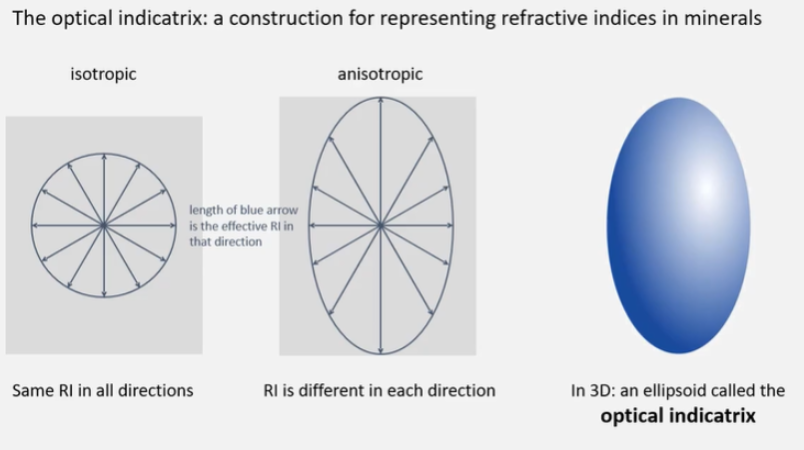
Explain the relationship between the number of refractive indices, the shape of the indicatrix, and the underlying crystal symmetry.
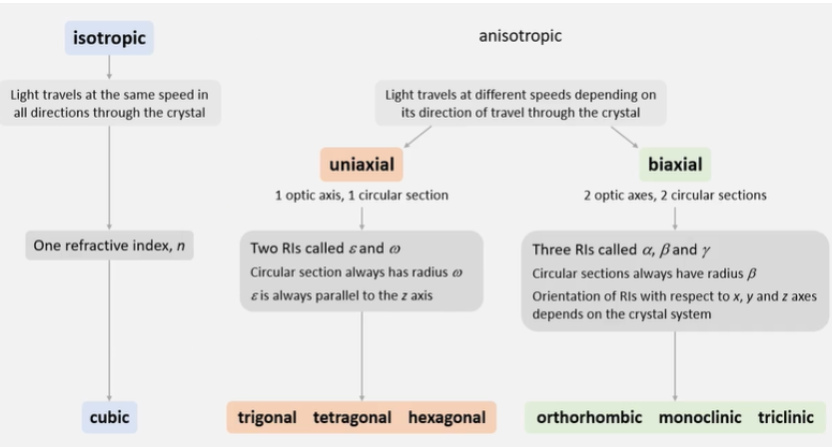
Assign the correct indicatrix shape, and the number of refractive indices to each crystal system
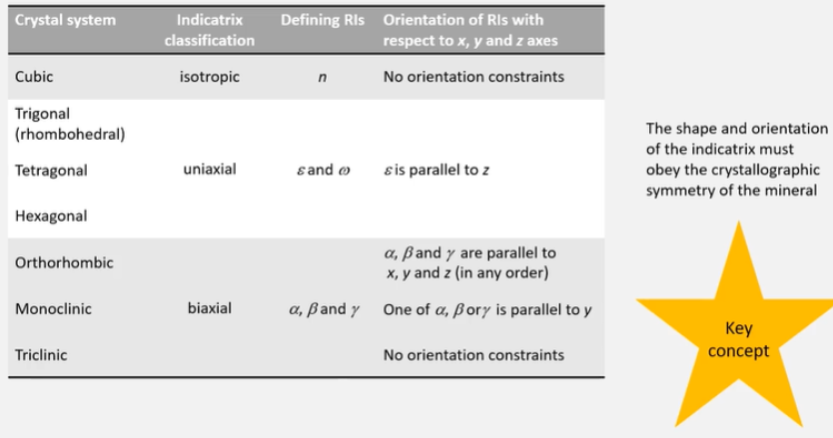
Describe the isotropic indicatrix.
Isotropic indicatrix = minerals with one refractive index, shape = sphere
Cubic!
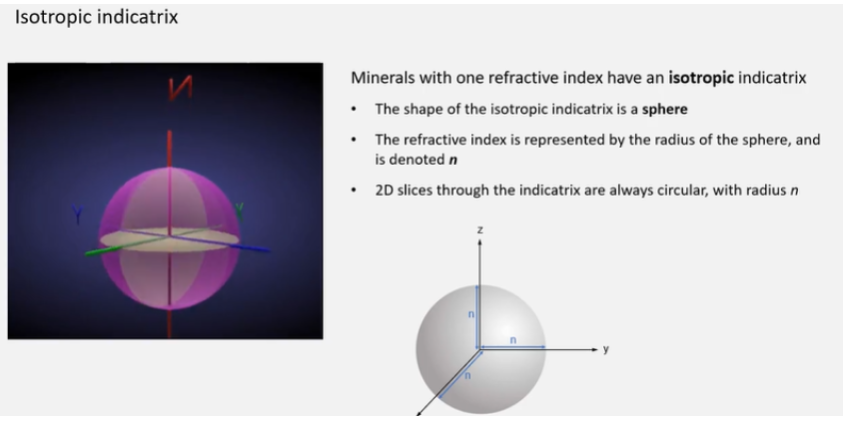
Describe the uniaxial indicatrix: one optic axis.
Uniaxial indicatrix = minerals with two refractive indices. Shape is an ellipsoid of revolution.
Trigonal, tetragonal, hexagonal (fits crystal systems with high degrees of rotational symmetry)
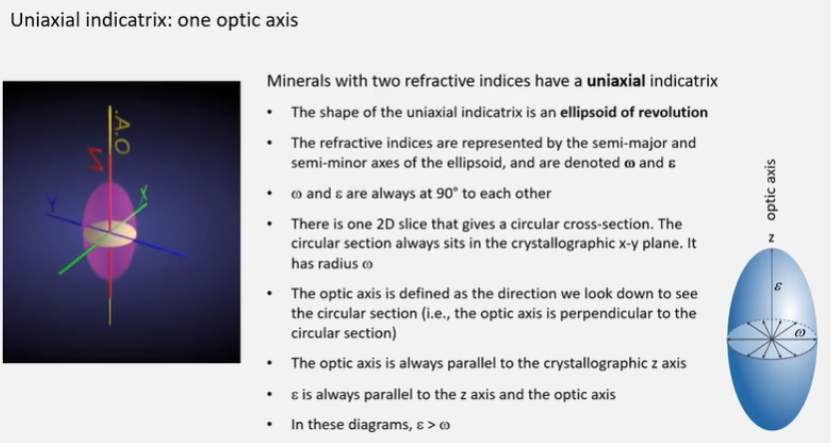
Describe the biaxial indicatrix: two optical axes.
Biaxial indicatrix = minerals with 3 refractive indices, shape = general ellipsoid
Orthorhombic, monoclinic (fits crystal systems with lower degrees of symmetry)
Triclinic (crystal system with no symmetry constraints)
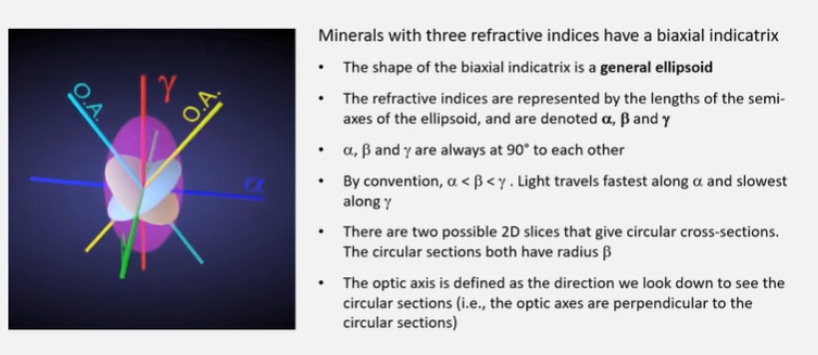
Where is 2V?
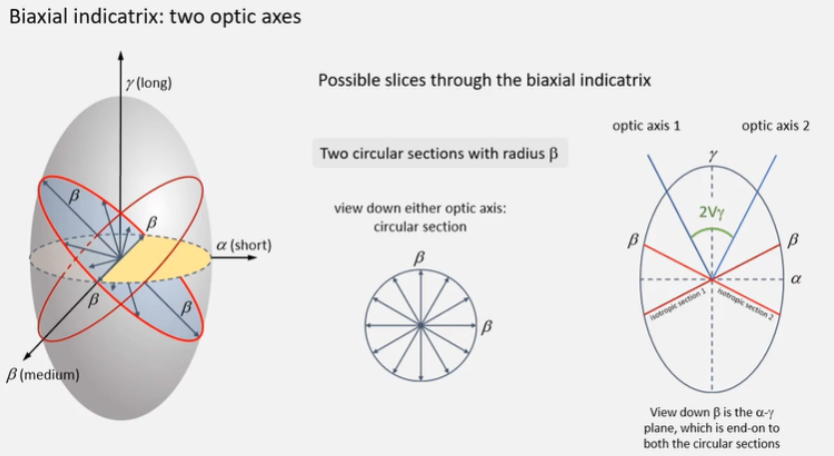
Recognise isotropic minerals in thin section from their optical properties.
Isotropic minerals - no change as stage is rotate, optical properties are the same in all directions.
Isotropic minerals appear dark under crossed polars in thin section because they do not change the polarization of light.
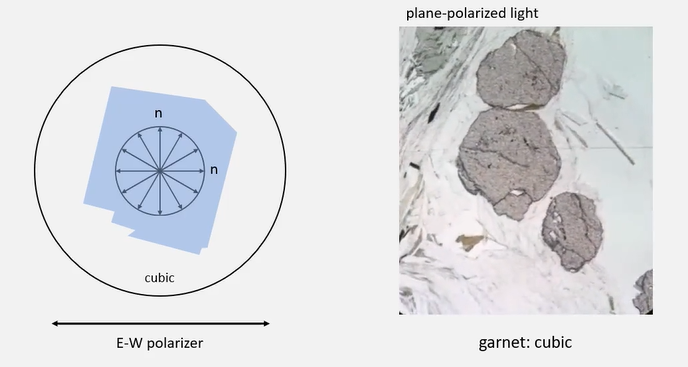
Explain why isotropic minerals are always extinct under crossed polars.
Extinction - appearing black in XP
Because they have the same refractive index in all directions.
Explain the concept of pleochroism.
Under plane polarised light, crystal or mineral shows different colours when viewed from different angles.
Difference between isotropic and anisotropic?
Isotropic = same properties in all directions
Anisotropic = properties change with direction
Not all anisotropic minerals display pleochroism.
But all that show pleochroism are anisotropic
How do you predict the observed pleochroic colour for an anisotropic mineral in a given orientation?
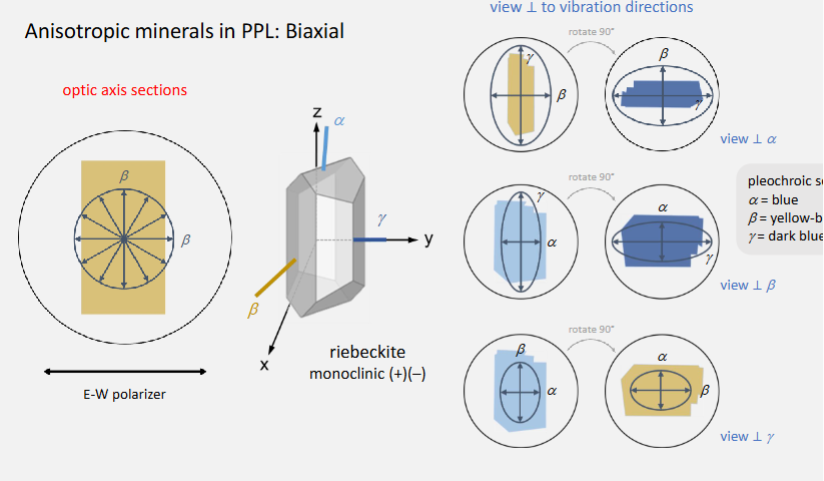
Explain the concept of optical interference.
Path difference between the rays = nλ, then constructive interference
If path difference = (n + ½)λ, then destructive interference
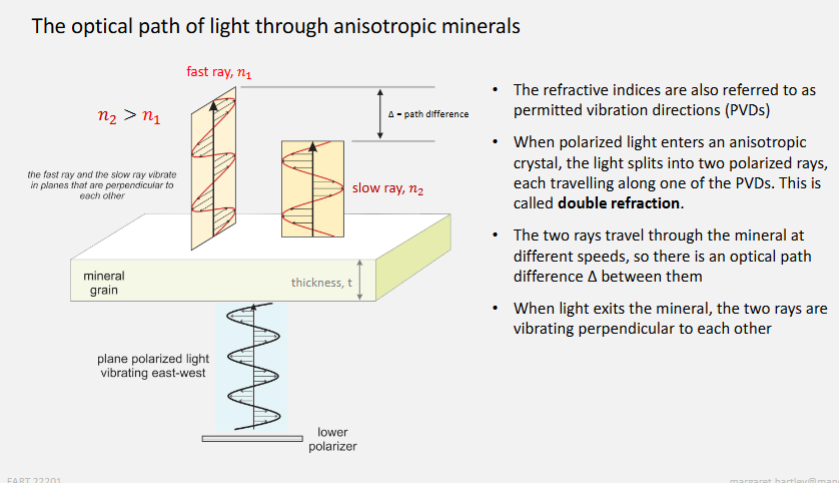
What equation relates optical path difference, thickness, and birefringence?
Birefringence number if found by subtracting the two refractive indices.
Birefringence is the property of an anisotropic mineral to split light into two rays that travel at different speeds when it passes through the crystal, interference colours
Standard thin section t = 30 um
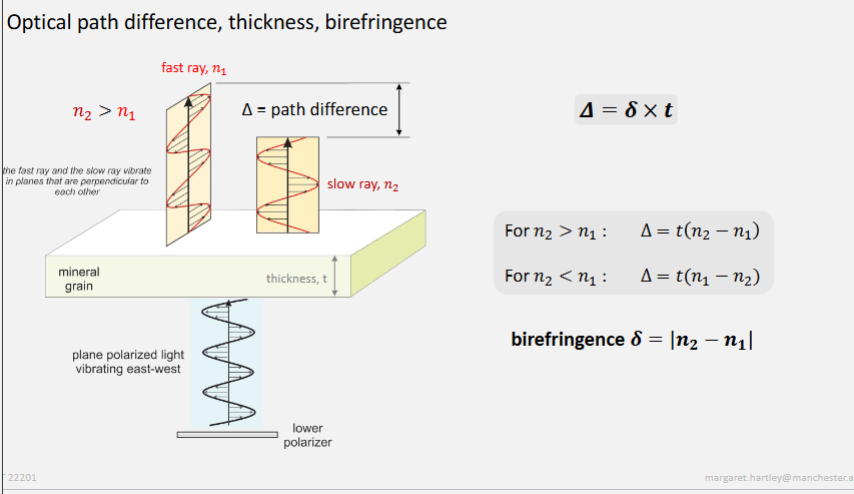
Use the Michel-Levy chart to determine the interference colour associated with a given value of birefringence and vice versa.
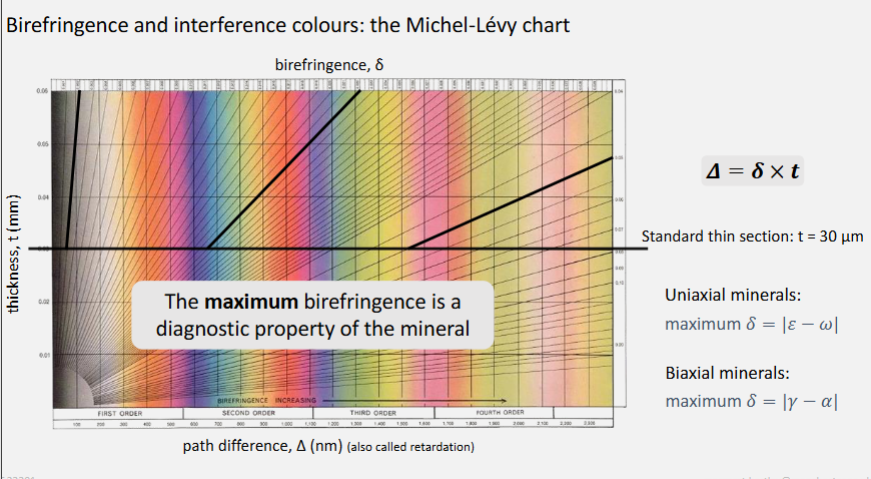
Explain, why, in a single thin section, different slices through mineral might show different interference colours.
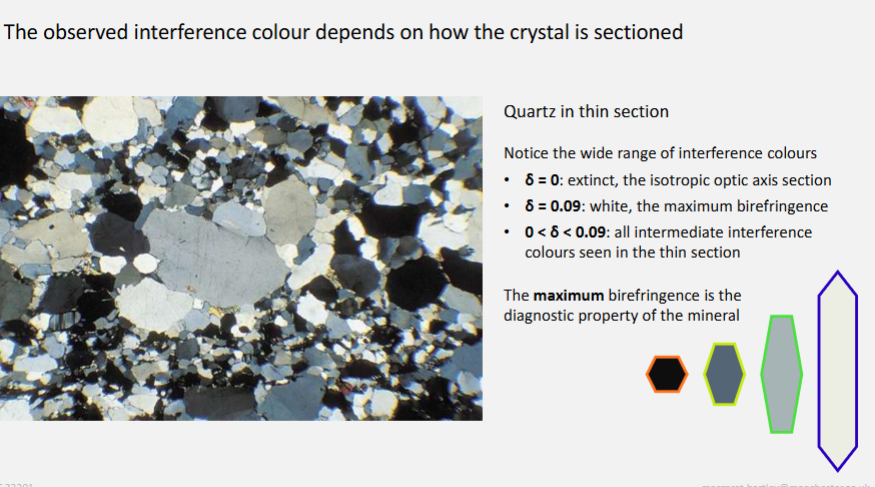
Explain the concept of extinction
Extinction is the phenomenon where an anisotropic mineral appears completely dark under crossed polarizers (XP) , every 90 degrees
Define the optical conditions under which a mineral will be in extinction in thin section
when its crystal axes are aligned with the polarizer EW and analyser NS directions.
When the refractive indices are parallel to polariser and analyser.
Maximum illuminations occurs at 45 degree to extinction.
Identify straight, inclined and symmetrical extinction in a thin section
Inclined extinction - crystal face is not aligned straihgtly,
Straight extinction - crystal faces parallel to one of the polarisers.
Compared to clear crystal face, or clear cleavage.
(when practical, align cleavage going horizontally) measure angle reference. Go to XPL if goes black then straight, if not then rotate until goes black record new angle and substract angles.
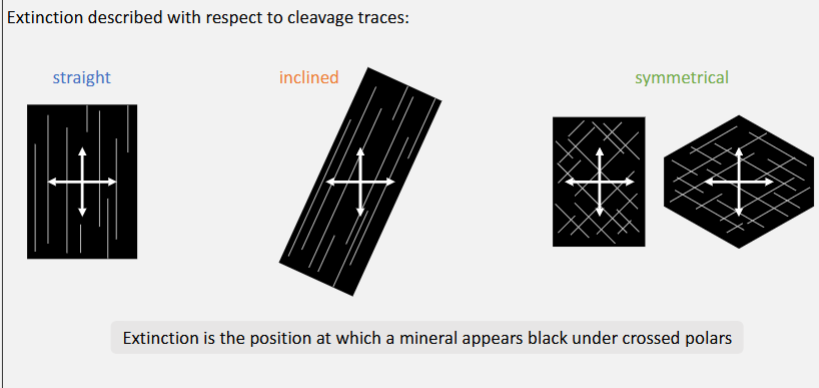
What the types of extinction for the different cubic systems.
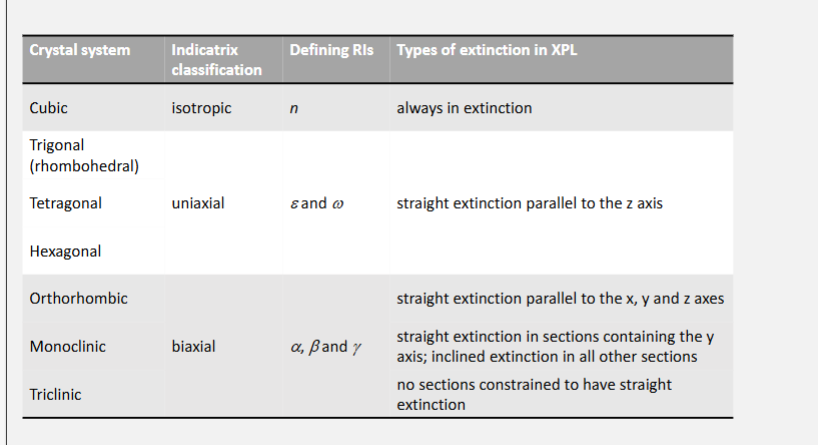
Summary of mineral properties that can be identified in PPL and XPL:
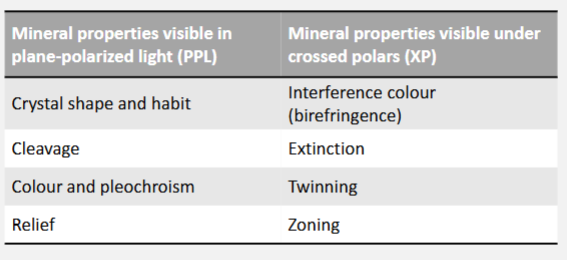
Describe an isotropic mineral:
An isotropic mineral has one defining refractive index. Under the microscope, when the stage is rotated, the mineral's appearance in plane-polarized light is always identical. Under cross-polarized light, the mineral is always in extinction.
How is the refractive index calculated?
dividing speed of light in air by the speed of light in the material
Snell’s Law, refractive index is equal to sin(angle of incidence) divided by sin(angle of refraction).
What is true about the optic axis of the indicatrix?
in a biaxial mineral, the radius of the circular optic axis section through the indicatrix is always equal to refractive index (beta)
a cross section through the indicatrix perpendicular to the optic axis has the same refractive index in every direction
What is true about pleochroism?
pleochroic scheme of biaxial mineral can contain up to 3 different colours
each pleochroic colour is associated with a specific refractive index
seen under plane-polarised light
no all minerals display pleochroic colours
for all indicatrix, optic axis section is circular and contains only one refractive index, so cannot exhibit pleochroism
Which crystal systems can exhibit inclined extinction under cross-polarised light?
Only monoclinic and triclinic.
Inclined extinction occurs if the permitted vibration directions are at an angle to the crystal face or cleavage trace. Cubic minerals are always in extinction, so they cannot be said to exhibit an extinction angle. The uniaxial crystal systems (trigonal, tetragonal, hexagonal) do not exhibit inclined extinction because the ε vibration direction is defined to be parallel to the crystallographic z axis. Orthorhombic minerals only exhibit straight extinction. Monoclinic minerals exhibit straight extinction in sections cut perpendicular to the x or z axes, but inclined extinction in all other sections. Triclinic minerals only exhibit inclined extinction.
What is meant by positive relief?
Mineral refractive index > epoxy refractive index
Negative relief when mineral RI < epoxy RI
ε (epsilon) is always parallel to which axis?
z-axis

Uniaxial - because it has 2 refractive indexes

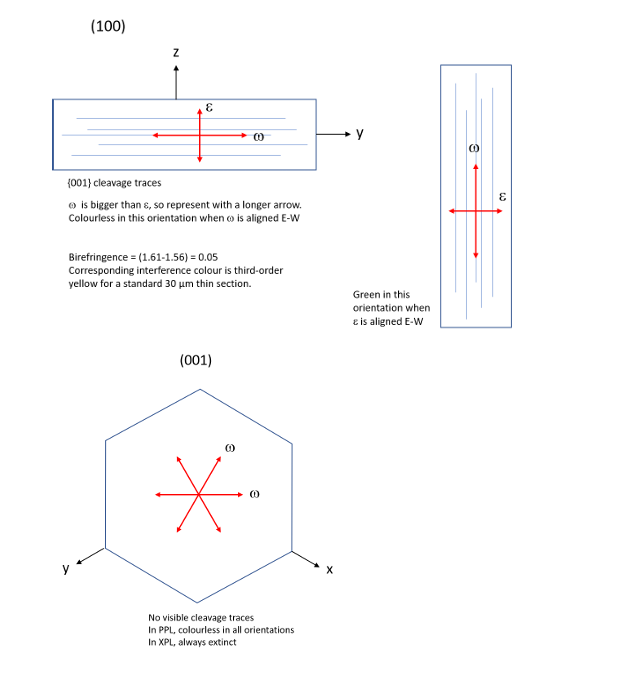
A uniaxial mineral has a prismatic habit, forming crystals that are elongated in the direction of the crystallographic z axis. The ε vibration direction is associated with a pink colour, while the ω direction is colourless. Which of the statements below accurately describes how this mineral will appear under plane-polarized light?
Basal sections (perpendicular to the z axis) will be colourless. Elongate prismatic sections will show pink-colourless pleochroism, and the pink colour will be seen when the long axis of the crystal is orientated E-W.
